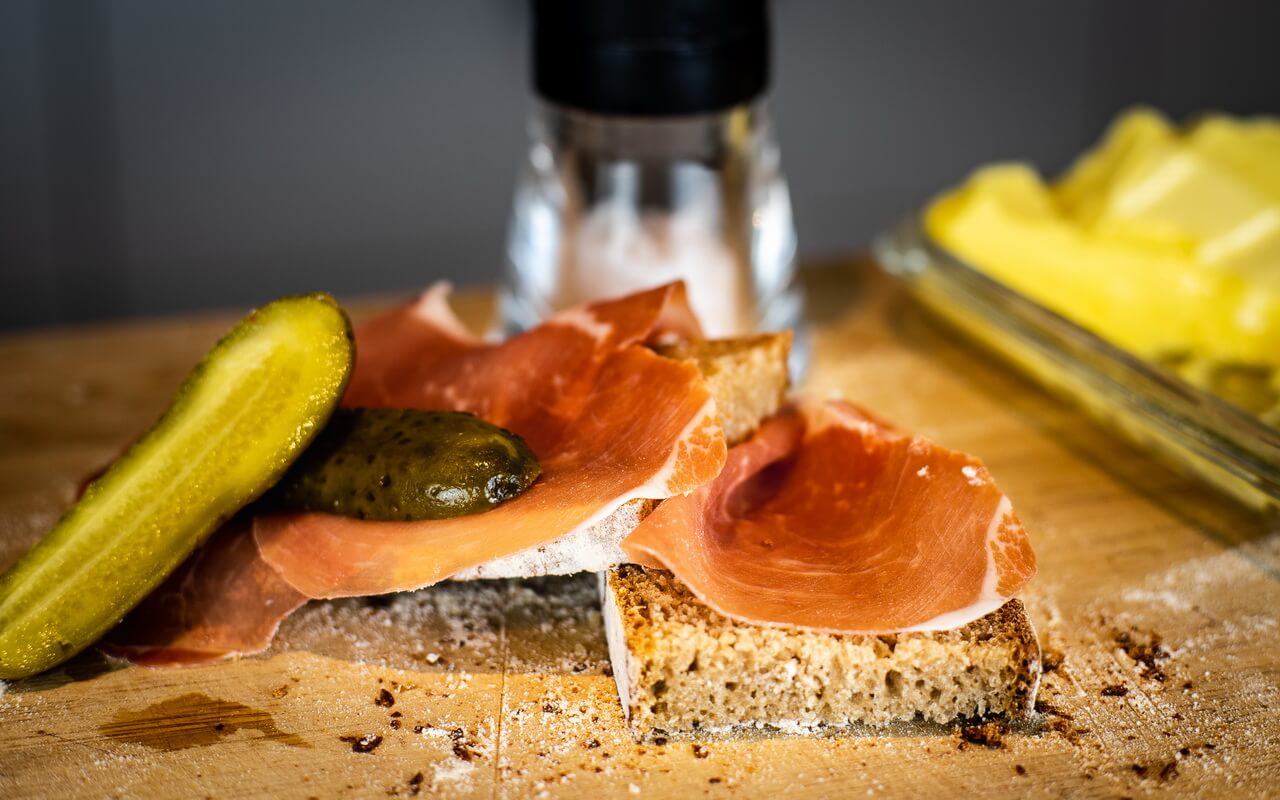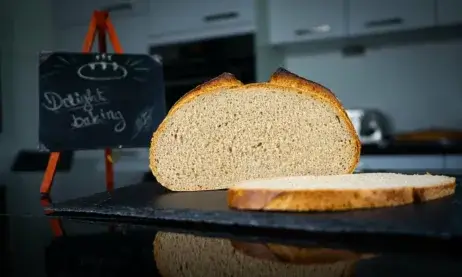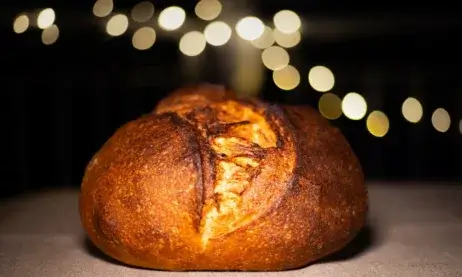This mild brown bread was baked after the recipe Nußdorfer Landbrot from Lutz Geißler.
This is the first recipe where we used the dock technique where you poke little holes on top of the surface of the dough. Also, as you can see from the pictures of our gallery, this bread has a little different look compared to our previous recipes which is due to more flour on its surface.
Things to know before you start
Time Schedule
| Steps | Work time | Waiting time |
| Levain | ~5 minutes | 16-20 hours |
| Autolyse | ~5 minutes | 16-20 hours |
| Mix | ~20 minutes | – |
| Bulk Fermentation, Stretch & Fold | ~5 minutes | 2 hours |
| Shape | ~5 minutes | – |
| Proof | – | 2 hours |
| Dock | ~5 minutes | – |
| Bake | ~5 minutes | 50 minutes |
| Cool | – | 2 hours |
This mild brown bread will be ready to be eaten in 24 to 28 hours.
Total ingredients
| Weight | Ingredient |
| 15 g | Sourdough starter – Preferably from whole wheat flour |
| 350 g | First clear flour |
| 200 g | Rye flour |
| 12 g | Salt |
| 0,1 g | Yeast – Fresh |
| 360 g | Water |
You will have a dough of about 937,1 g in total.
Difficulty
A simple recipe for a great mild brown bread. If you have never baked such a bread before consider having a look at our recipe sourdough bread for beginners which contains a lot of details for most steps in this recipe.
Baking tools
Besides some of our should have baking tools you should use a round banneton proofing basket to get a nice shape for this brown bread. We recommend using an oval banneton proofing instead of a round one like we did so your bread will be higher.
Steps
1. Levain
| Weight | Ingredient |
| 15 g | Sourdough starter – Preferably from whole wheat flour |
| 150 g | First clear flour |
| 110 g | Water – Room temperature |
- Mix your starter with the ingredients above
- Store sealed for 16 to 20 hours at 20-22°C (68-71,6°F)
2. Autolyse
| Weight | Ingredient |
| 100 g | Water – Room temperature |
| 0,1 g | Yeast – Fresh |
| 100 g | First clear flour |
- Same as in the first levain step, mix the ingredients above in a second bowl
- Store sealed for 16 to 20 hours at 20-22°C (68-71,6°F)
3. Mix
| Weight | Ingredient |
| – | Levain |
| – | Autolyse |
| 100 g | First clear flour |
| 200 g | Rye flour |
| 12 g | Salt |
- Mix all of the mentioned ingredients together with a stand mixer for 8 minutes on speed level one and 2 minutes on speed level two
- The dough shouldn’t stick too much to the bowl at the end of the mixing
4. Bulk Fermentation, Stretch & Fold
- Cover the dough and let it rest for a total of 2 hours at 20-22°C (68-71,6°F)
- During that time stretch & fold the dough once after 1 hour
- Afterwards put it back to the bowl and cover it for one more hour so it doesn’t dry out
5. Shape
- Get the dough in shape by rounding it
- If you are going to use an oval proofing basket you will also have to long mould it after the rounding
6. Proof
- Dust your proofing basket with a decent amount of first clear flour
- Put your previously shaped dough seam-side-up in the dusted proofing basket
- Cover it with a towel
- Let it proof for 2 hours at 22-24°C (71,6-75,2°F)
7. Dock
- Gently take your loaf out of the proofing basket by flipping it upside down on a pizza plate covered with parchment paper
- Poke holes of about 1 cm on the whole top of the dough in straight lines
8. Bake
- Preheat oven to 250°C (482°F) for ~45 minutes with the upper and lower heat function
- Put the loaf in the oven, create steam and bake for 50 minutes
- After 10 minutes lower the temperature to 200°C (392°F), let the steam out by opening the oven door for ~45 seconds and close it again
9. Cool
- Let your loaf cool for about 2 hours on some kind of grid
Conclusion
Crust
Dark with an aromatic flavour.
Crumb
Soft and a little moist with mostly even pores.
Taste
As the name already tells you this is a mild brown bread. It has a very aromatic flavour but is not too strong that it covers everything else.
Goes good with
We like to combine this bread with hearty things such as ham, some gherkins or maybe scrambled eggs.
















